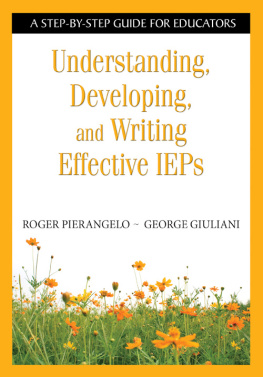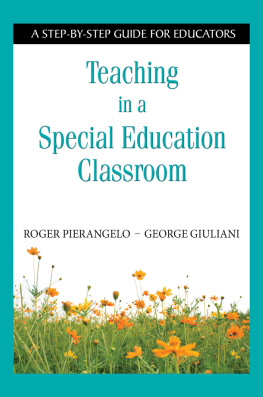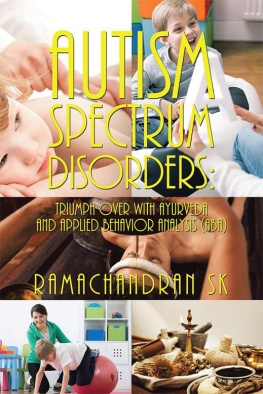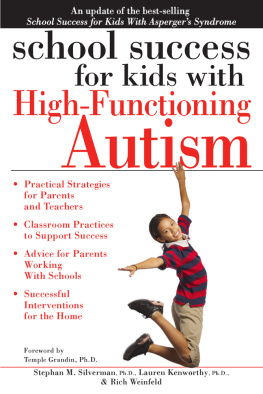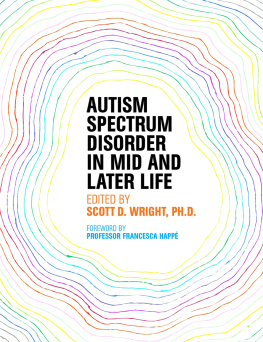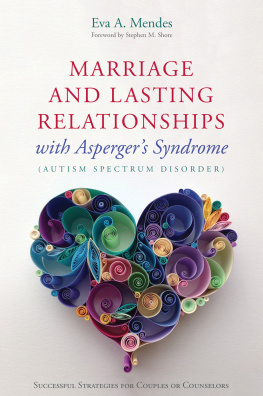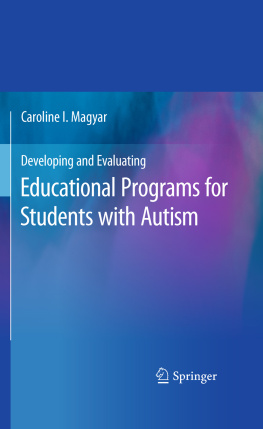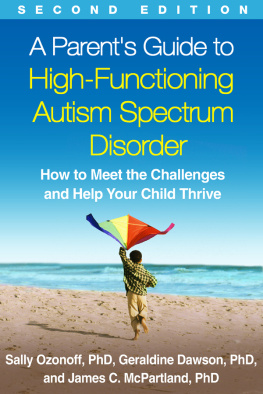Teaching
Students with
Autism Spectrum
Disorders
This book is dedicated to my wife, Jackie, and my two children, Jacqueline and Scott, who provide me with the love and purpose for undertaking projects that I hope will enhance the lives of others. My life has been blessed by their loving presence. I also dedicate this book to my parents, who provided me with the secure and loving foundation from which to grow; my sister, Carol, who makes me smile and laugh; and my brother-in-law, George, who has always been a positive guiding light in my professional journey.
R.P.
This book is dedicated to my wife, Anita, and two children, Collin and Brittany, who give me the greatest life imaginable. The long hours and many years it took to finish this book would never have been possible without the support of my loving wife. Her constant encouragement, understanding, and love provide me with the strength I need to accomplish my goals. I thank her with all my heart. I also dedicate this book to my parents, who have given me support and guidance throughout my life. Their words of encouragement and guidance have made my professional journey a rewarding and successful experience.
G.G.
A STEP-BY-STEP GUIDE FOR EDUCATORS
Teaching
Students with
Autism Spectrum
Disorders
ROGER PIERANGELO ~ GEORGE GIULIANI

Skyhorse Publishing
Copyright 2008 by Corwin Press
First Skyhorse Publishing edition 2012
Photos courtesy of Susan Stokes. Used with permission.
All Rights Reserved. No part of this book may be reproduced in any manner without the express written consent of the publisher, except in the case of brief excerpts in critical reviews or articles. All inquiries should be addressed to Skyhorse Publishing, 307 West 36th Street, 11th Floor, New York, NY 10018.
Skyhorse Publishing books may be purchased in bulk at special discounts for sales promotion, corporate gifts, fund-raising, or educational purposes. Special editions can also be created to specifications. For details, contact the Special Sales Department, Skyhorse Publishing, 307 West 36th Street, 11th Floor, New York, NY 10018 or info@skyhorsepublishing.com.
Skyhorse and Skyhorse Publishing are registered trademarks of Skyhorse Publishing, Inc., a Delaware corporation.
Visit our website at www.skyhorsepublishing.com.
10 9 8 7 6 5 4 3 2 1
Library of Congress Cataloging-in-Publication Data is available on file.
ISBN: 978-1-62087-220-8
Printed in China

Contents

Preface
A utism spectrum disorder (ASD) is a developmental disorder of neurobiological origin that can have lifelong effects on social interaction, ability to communicate ideas and feelings, imagination, and establishment of relationships. ASD varies in severity of symptoms, age of onset, and association with other disorders, such as mental retardation, language disability, and epilepsy. The manifestation also varies across children and time. No two individuals with ASD are alike, even if they have the same diagnosis. ASD affects approximately four times more boys than girls. According to the National Research Council (2001), There is no single behavior that is always typical of ASD and no behavior that would automatically exclude an individual child from a diagnosis of ASD, even though there are strong and consistent commonalities, especially in social deficits (p. 11).
Leo Kanner identified characteristics of ASD in 1943. After more than 60 years, these characteristics are still current. They include (a) problems in relating to people and situations; (b) speech and language problems; (c) developmental delays; (d) problems in relating to environmental changes; and (e) Stereotypic, repetitive actions and other peculiar motor movements (Simpson & Zionts, 2000).
The overall goal of educational programs for all students, including students with ASD, is a life with independence and functioning within the community. Reaching this goal requires an education based on the individual needs of the child/student. Setting the individual goals for each child requires realistic assessment of present levels of ability, as well as identification of learning deficits. In other words, what can the child with ASD do now, what skills does the child excel in, what skills can be enhanced, and what skills does the student need to be able to seek employment and live in the community in adulthood? Is there improvement in the childs social and language development? Are negative behaviors being addressed? What kind of program does it take to accomplish the overall goal?
In general, we know that we must structure the classroom environment so the educational program is consistent and predictable for the student. Children with ASD are less confused and learn better in that environment. They also learn better with information presented visually as well as verbally. Insofar as is appropriate, children with ASD should have opportunities to interact with nondisabled peers who can provide models of appropriate behavior, language, communication, social, and play skills.
Students with ASD should also have training in community living skills and vocational skills at the earliest possible age. They need to be taught how to interact with others and be provided opportunities to develop relationships with other students. Teaching safety habits, such as crossing the street or asking for help when needed, is critical to developing independence. Learning to make simple purchases and to handle money is another example of a needed skill. All of these skills may be difficult, in varying degrees, for the student with ASD to learn. However, ongoing assessment of abilities along with individualized education programs will facilitate the achievement of maximum independence for each child with ASD.
The importance of family involvement in the educational program is paramount. Programs developed with the parents to carry over learning activities, experiences, and approaches from school to the home and community will facilitate generalization of those skills. Generalization to home and community is essential for each child with ASD to develop maximum independence and integration into the community. Also, specialized adult support services in employment and living arrangements are available to support youth and adults with ASD in living and working with varying degrees of independence in the community.
Teaching Students with Autism Spectrum Disorders: A Step-by-Step Guide for Educators will provide an overview of ASD and numerous strategies essential to implementing effective educational programs for these students. After reading Teaching Students with Autism Spectrum Disorders: A Step-by-Step Guide for Educators, you should understand the following:
Characteristics of children with ASD
Types of ASDs
Eligibility criteria for children with ASD
Effective interventions for young children with ASD
Creating quality educational programs for children with ASD
Collaborating with parents
Effective programming for young children with ASD
Teaching students with ASD: Instructional approaches
Teaching students with ASD: Strategies for classroom management
Teaching students with ASD: Strategies for communication development
Teaching students with ASD: Strategies for social skills
Next page



